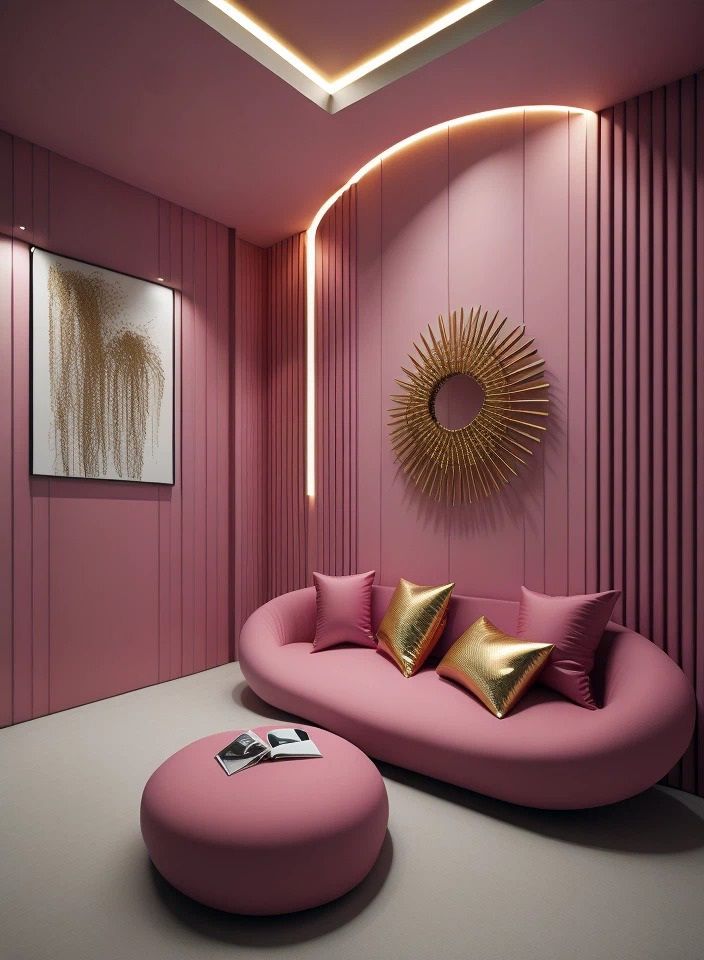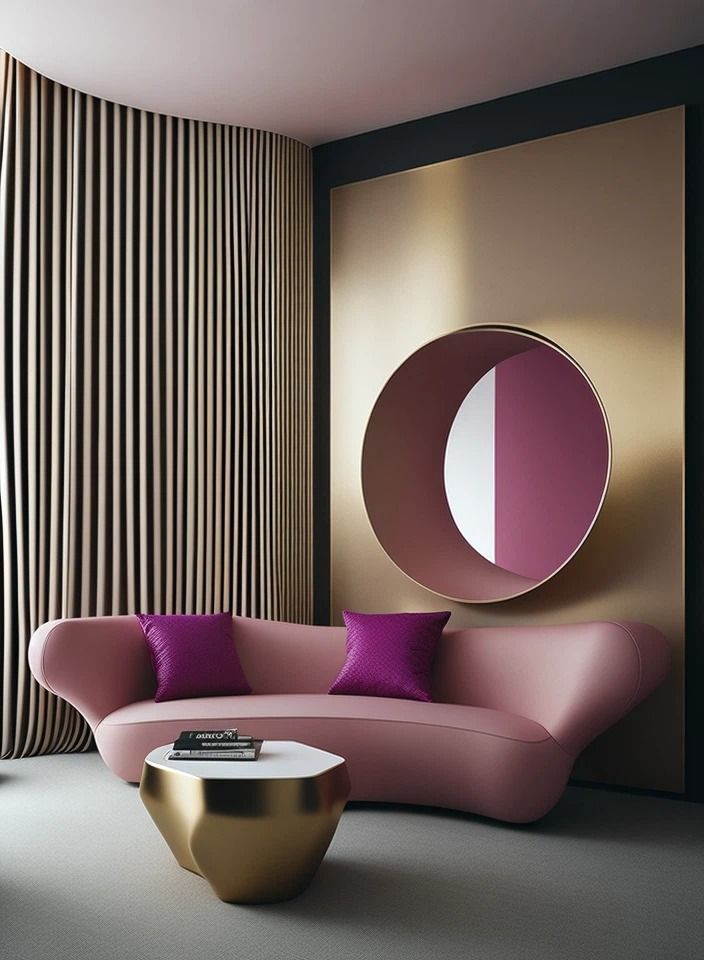
The rapid advancement of Artificial Intelligence (AI) has transformed industries ranging from healthcare to finance, and now, it’s making waves in interior design industry. With the rise of AI-powered interior design tools, professionals and homeowners alike can create stunning, functional spaces with unprecedented ease. From AI-generated 3D visualizations to personalized design recommendations, technology is reshaping how we approach decor and space planning.
As AI in interior design continues to evolve, it brings both opportunities and challenges. Will machine learning in interior design replace human creativity, or will it enhance it? Is a major concern at this time. How do AI visualization tools improve efficiency while maintaining a personal touch? In this article, we’ll explore the impact of AI-driven space planning, the best AI design software, and what the future holds for digital interior design.
The Role of AI in Modern Interior Design

AI Tools in Interior Design: The Game Changers
Several cutting-edge AI-powered interior design tools are revolutionizing the industry. These platforms leverage machine learning in interior design to automate tasks, generate ideas, and streamline workflows. Here are some of the most innovative solutions:
1. Planner 5D
This AI design software allows users to create detailed floor plans and realistic 3D renderings effortlessly. With AI-assisted design, Planner 5D suggests furniture arrangements, color schemes, and decor styles based on user preferences.
2. InteriorAI
A powerful tool for virtual interior design, InteriorAI uses AI-generated 3D visualizations to transform sketches into photorealistic room designs. It’s ideal for homeowners and designers looking to experiment with different styles before committing to a final look.
3. Midjourney
While primarily known for AI art generation, Midjourney has found applications in AI in home decor. Designers can input text prompts like “modern Scandinavian living room,” and the tool generates inspiring visuals that can guide real-world projects.
4. Houzz AI
This platform uses AI-driven space planning to recommend furniture layouts and decor items tailored to a room’s dimensions and style. It’s a great example of design automation in action.
5. Autodesk Homestyler
A favorite among professionals, this tool combines AI visualization tools with advanced modeling capabilities, making it perfect for AI in architecture and home renovation projects.
These tools demonstrate how AI in creative industries is enhancing productivity and creativity, allowing designers to focus on innovation rather than repetitive tasks.
Benefits of AI in Interior Design
The integration of AI in interior design offers numerous advantages, making the design process faster, smarter, and more personalized.

1. Enhanced Efficiency with Automated Design Workflows
AI eliminates time-consuming manual tasks like space measurement and layout planning. AI-powered interior design tools can generate multiple design options in seconds, drastically reducing project timelines.
2. Personalized Design Recommendations
Using machine learning in interior design, AI analyzes user preferences, past projects, and trending styles to suggest tailored decor solutions. Whether it’s smart home design or office interiors, AI ensures every space reflects individual tastes.
3. Realistic AI-Generated 3D Visualizations
Gone are the days of vague sketches—AI visualization tools produce lifelike renderings that help clients visualize the final outcome before any physical changes are made.
4. Cost and Resource Optimization
AI helps in AI-driven space planning by optimizing furniture placement and material usage, reducing waste and unnecessary expenses.
5. Democratizing Design with Virtual Interior Design
AI makes professional-grade design accessible to everyone. Homeowners can experiment with AI in home renovation without hiring expensive consultants, while designers can scale their services efficiently.
Challenges of AI in Interior Design
Despite its benefits, AI in interior design is not without challenges.

1. Over-Reliance on Technology
While AI-assisted design speeds up processes, excessive dependence on algorithms may stifle human creativity. The best designs often come from a blend of AI-enhanced design processes and human intuition.
2. Loss of the Human Touch
Interior design is deeply personal. AI-generated 3D visualizations can’t fully replicate the emotional connection a designer builds with clients.
3. Data Privacy Concerns
Many AI design software platforms require uploading personal home data, raising concerns about security and misuse.
4. Limited Customization in Some Tools
While AI-powered interior design tools offer suggestions, they may not always account for unique architectural constraints or unconventional design preferences.
The Future of AI in Interior Design
The future of AI in interior design is brimming with possibilities. Here are some emerging trends:

1. AI in Smart Home Design
As smart homes become mainstream, AI-driven space planning will integrate IoT devices seamlessly into living spaces for optimal functionality.
2. Generative AI for Unique Designs
Future AI design software will use machine learning in interior design to create entirely original decor styles, pushing creative boundaries.
3. Augmented Reality (AR) + AI Integration
Combining AI-generated 3D visualizations with AR will allow users to walk through virtual designs in real time before implementation.
4. Sustainable AI-Powered Design
AI will play a key role in AI in home renovation by recommending eco-friendly materials and energy-efficient layouts.
5. AI as a Collaborative Partner
Rather than replacing designers, AI in creative industries will act as a co-creator, handling repetitive tasks while humans focus on innovation.
For Instant Query Call us at– +91 8588 999 885 / +91 999 999 3775
Conclusion: Embracing AI in Interior Design
The rise of AI in interior design marks a new era of efficiency, personalization, and creativity. From AI-powered interior design tools like Planner 5D and Midjourney to AI-generated 3D visualizations, technology is transforming how we design spaces. While challenges like over-reliance on automation exist, the benefits far outweigh the drawbacks.
As AI in architecture and digital interior design continues to evolve, designers and homeowners should embrace these tools to stay ahead. Whether you’re planning a smart home design or a complete AI in home renovation, integrating AI into your workflow can lead to stunning, functional, and personalized spaces. If you want to take the help of a professional Interior designers to solve your issue then here Kriaan Enterprises- An award-winning interior design and consultancy company is for you.
The future of design is here—will you be part of the revolution?
Final Thoughts
By leveraging AI in interior design, we unlock endless possibilities for innovation. From automated design workflows to AI-enhanced design processes, technology is not just changing how we design—it’s redefining what’s possible.
Ready to explore AI-powered design? Try out some of the tools mentioned and experience the future of interiors today!

















